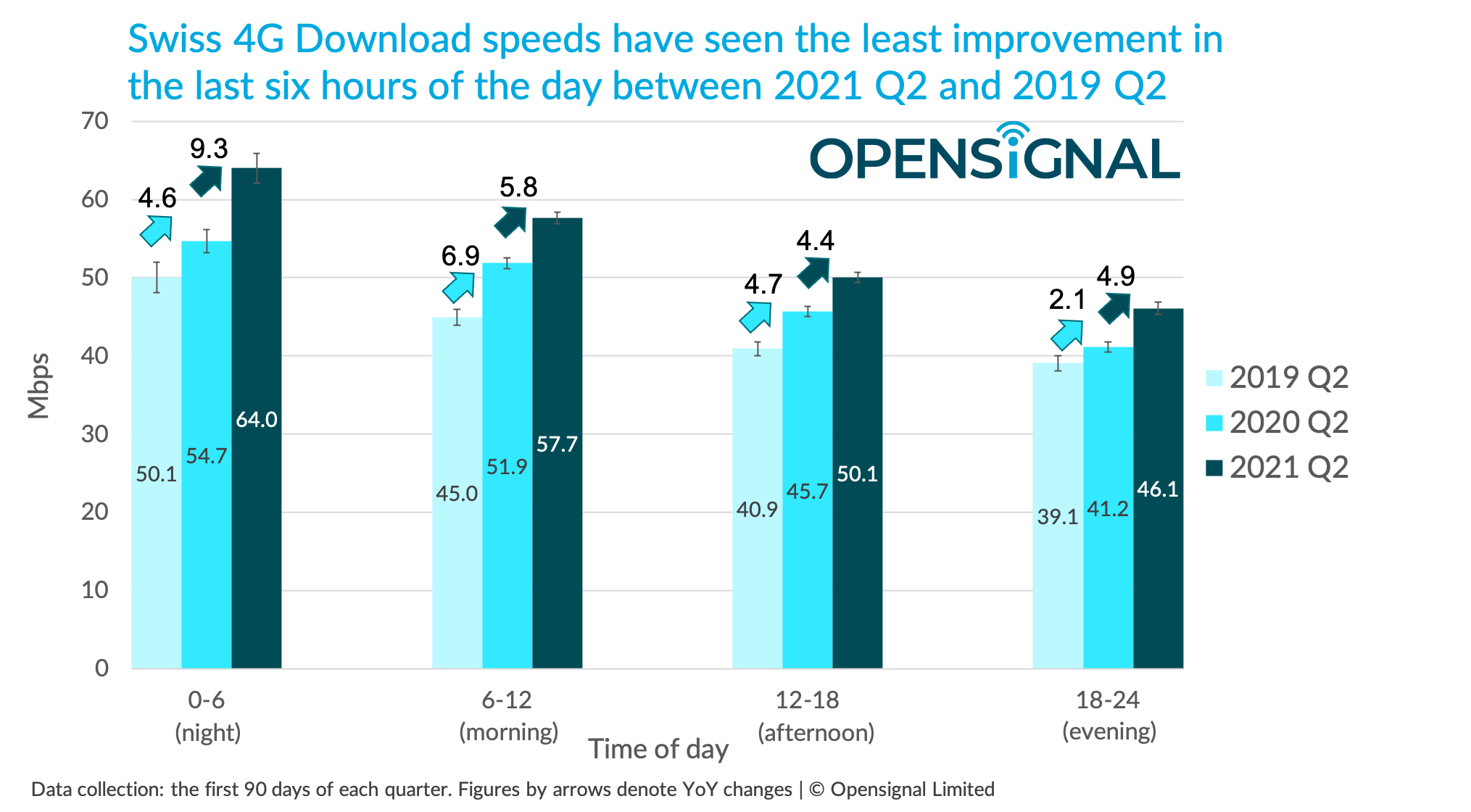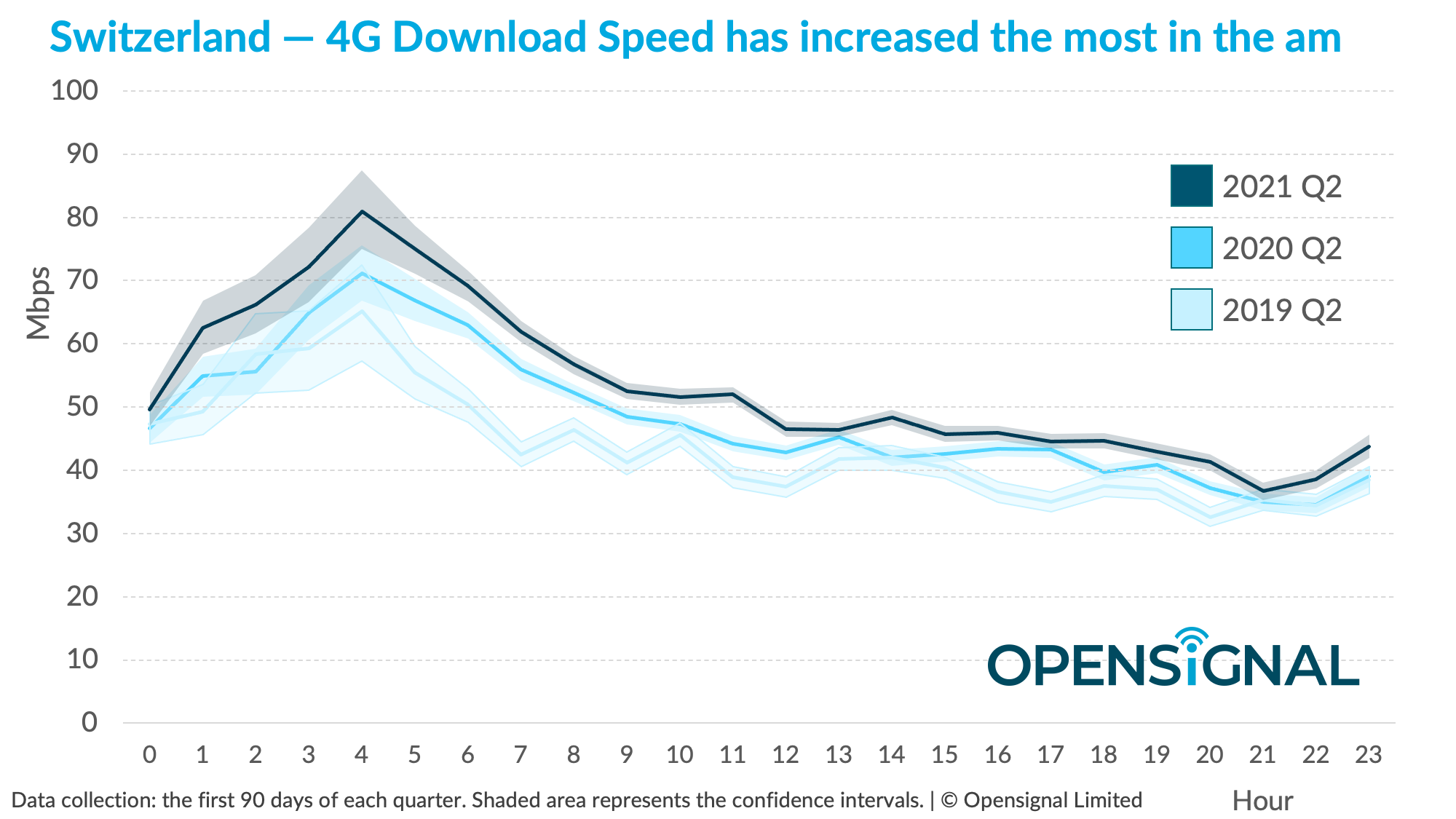Switzerland’s already impressive download speeds have been increasing, but so has data consumption. To assess how increases in network capacity are keeping up with larger volumes of mobile traffic, Opensignal has examined how the average 4G download speeds observed by our Swiss users vary over the course of the day. Partly due to congestion on the country’s mobile networks at the busiest times of the day, our users saw the largest improvements in 4G Download Speed in the early hours and the morning.
The average speeds seen by our Swiss 4G users have improved significantly in recent years and from an already impressive starting point.

However, these gains in speed aren’t evenly distributed across the day. Download speeds have improved most in the early hours of the day and the least in the evening between the second quarter of 2019 and 2021. But our users saw more of an improvement in the evening than in the afternoon between 2020 and 2021 rising by 4.9 Mbps and 4.4 Mbps respectively.

One of the reasons why the increases in speed aren’t evenly distributed throughout the day is that the load on mobile networks varies significantly across any 24 hour period — it falls in the late evening when people fall asleep and rises when they wake up and begin using their smartphones again. During the busiest periods of the day the sheer volume of data consumption makes it difficult for mobile networks to provide users with the same speeds that they observe during quieter periods.
Mobile data consumption is a major driver of congestion. According to our recent Quantifying the Impact of 5G and COVID-19 on Mobile Data Consumption report, our Swiss smartphone users consumed 8.7 GB/month of data in Q1 2019, rising to 14.4 GB/month in Q1 2020 and 15 GB/month in Q1 2021. Swisscom warned in its 2020 annual report that “...mobile expansion can no longer keep up with the increasing volume of data traffic…” It added that “5G could ease the situation with the necessary hardware adjustments, but expansion is stalling as a result of resistance and regional moratoria”.
Another factor that makes the Swiss mobile market particularly vulnerable to congestion is the country’s extremely tight electromagnetic field (EMF) regulations — to the extent that the power limits for base stations are 10 times stricter than those prescribed by the EU. This means that Swiss mobile operators face greater challenges in offering a good mobile experience to their users than do operators in other countries.
However, one positive development took place in February with the Federal Office for the Environment (FOEN) providing an adapted enforcement aid to cantons and communes’ licensing authorities, which ensures that adaptive antennas are not judged more strictly than conventional antennas in terms of electromagnetic radiation.
Switzerland’s mobile operators are racing to keep up with growing mobile data consumption — and it’s no easy task given the hurdles that they have to overcome. We’ve seen that 4G speeds have increased, but only by a little during the busiest times of the day. Opensignal will continue to monitor the situation as we move further into the 5G era.
Opensignal Limited retains ownership of this insight including all intellectual property rights, data, content, graphs & analysis. Reports and insights produced by Opensignal Limited may not be quoted, reproduced, distributed, published for any commercial purpose (including use in advertisements or other promotional content) without prior written consent. Journalists are encouraged to quote information included in Opensignal reports and insights provided they include clear source attribution. For more information, contact [email protected].
